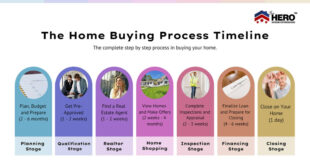Refinance Without Equity: Unlocking Financial Opportunities. Refinancing your home has traditionally required a certain level of equity, but modern financial solutions now offer opportunities for homeowners to refinance without equity. This guide explores how to achieve this, the benefits, challenges, and steps involved, providing practical tips and answers to frequently asked questions.
What Does It Mean to Refinance Without Equity?
Refinancing without equity means replacing your existing mortgage with a new one, even if you owe as much as or more than your home’s current market value. This type of refinancing is often facilitated by specialized loan programs such as:
- HARP (Home Affordable Refinance Program): Designed to help underwater homeowners.
- FHA Streamline Refinance: For homeowners with FHA loans.
- VA Interest Rate Reduction Refinance Loan (IRRRL): For veterans and active-duty military members.
These programs are ideal for homeowners who want to lower their interest rates, reduce monthly payments, or switch loan types without needing equity.
Benefits of Refinancing Without Equity
- Lower Interest Rates: Access competitive rates despite having no equity.
- Reduced Monthly Payments: Lower your financial burden.
- Avoid Foreclosure: Gain financial stability and avoid losing your home.
- Improved Loan Terms: Switch from adjustable to fixed-rate mortgages or vice versa.
- Debt Consolidation: Combine multiple debts into one manageable payment.
Challenges of Refinancing Without Equity
- Higher Fees: Additional costs like mortgage insurance premiums.
- Strict Eligibility Requirements: Program-specific qualifications.
- Limited Availability: Not all lenders offer no-equity refinance options.
- Potential for Negative Equity: If property values drop further.
Step-by-Step Guide to Refinancing Without Equity
1. Evaluate Your Financial Situation
- Assess your income, expenses, and current mortgage details.
- Obtain a recent appraisal to understand your home’s market value.
2. Research Suitable Programs
- Explore options like HARP, FHA Streamline, or VA IRRRL.
- Compare eligibility criteria and benefits.
3. Check Your Credit Score
- Aim for a score above 620 for better terms.
- Improve your score by paying off small debts and avoiding new credit applications.
4. Gather Necessary Documents
- Income verification (pay stubs, tax returns).
- Proof of existing loan details.
- Asset documentation (if applicable).
5. Apply With a Reputable Lender
- Choose lenders experienced in no-equity refinances.
- Submit your application with accurate details.
6. Review the Terms Carefully
- Ensure you understand the new interest rate, term length, and associated costs.
7. Close the Loan
- Sign the new agreement and start enjoying the benefits.
10 Tips for Refinancing Without Equity
- Check Government Programs: Utilize HARP or FHA Streamline if eligible.
- Shop Around: Compare multiple lenders for the best terms.
- Improve Your Credit Score: Secure better rates by enhancing your credit profile.
- Understand Costs: Be aware of closing costs and other fees.
- Consider Timing: Refinance when rates are low.
- Negotiate Terms: Request waivers or reductions on fees.
- Maintain Financial Stability: Avoid major purchases during the refinancing process.
- Seek Professional Advice: Consult mortgage brokers or financial advisors.
- Read the Fine Print: Fully understand the loan terms before signing.
- Prepare for Appraisal: Ensure your property is in good condition to support a favorable valuation.
10 Frequently Asked Questions About Refinancing Without Equity
1. Can I refinance with no equity in my home?
Yes, through programs like HARP, FHA Streamline, or VA IRRRL, you can refinance without equity.
2. Do I need good credit to refinance without equity?
While a higher credit score improves your chances, some programs accommodate lower scores.
3. Are there additional fees for no-equity refinancing?
Yes, you may face higher fees or mortgage insurance requirements.
4. What happens if my home’s value decreases further?
You might remain in negative equity but benefit from lower payments.
5. Can I switch lenders during refinancing?
Yes, you’re free to choose a lender offering the best terms.
6. How long does the process take?
Typically 30-60 days, depending on the lender and documentation.
7. Is appraisal necessary?
Some programs waive appraisals, but others may require it.
8. Can I refinance an investment property with no equity?
Most programs focus on primary residences, but check with specific lenders.
9. What’s the maximum loan-to-value (LTV) ratio allowed?
HARP and similar programs may allow up to 125% LTV or more.
10. Can I refinance multiple times without equity?
Yes, but ensure it aligns with your financial goals.
Conclusion
Refinancing without equity opens up valuable opportunities for homeowners facing challenging financial circumstances. By leveraging specialized loan programs, you can secure better terms, reduce monthly payments, and regain financial stability. While the process may involve additional costs and strict eligibility requirements, thorough preparation and expert guidance can make it a worthwhile endeavor.
Whether you aim to consolidate debt, lower your interest rate, or avoid foreclosure, refinancing without equity can provide the financial relief you need. Explore your options, consult with reputable lenders, and take proactive steps to secure a brighter financial future.
 mortgage.kbk.news
mortgage.kbk.news
